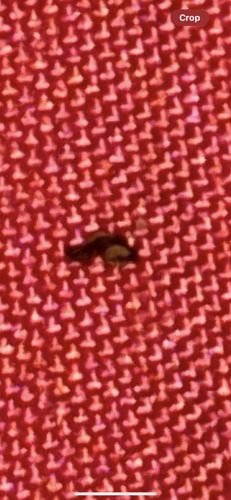Flea
Scientific Name: Ctenocephalides felis (cat flea, most common species found on both cats and dogs) or Ctenocephalides canis (dog flea)
Order & Family: Order Siphonaptera, Family Pulicidae (common fleas)
Size: 1.5 mm to 3.3 mm (typically small, wingless, and laterally compressed)

Natural Habitat
Fleas typically live on the bodies of their animal hosts (mammals and birds), but can also be found in host nests, bedding, carpets, and other areas where hosts rest or spend significant time.
Diet & Feeding
Adult fleas feed exclusively on the blood of warm-blooded animals (hematophagy). Larvae feed on organic detritus, including skin flakes, hair, and the blood-rich feces of adult fleas.
Behavior Patterns
Adult fleas are highly mobile, jumping significant distances to find hosts. They are ectoparasites, meaning they live on the outside of their hosts, feeding on blood. Their life cycle includes eggs, larvae, pupae, and adults. Larvae feed on organic debris, including adult flea feces, before pupating in a silken cocoon. Adults emerge from cocoons when stimulated by vibrations, warmth, or carbon dioxide indicating a potential host.
Risks & Benefits
Potential risks include causing itching and skin irritation (flea bite dermatitis) in humans and pets. They can transmit diseases such as plague (Yersinia pestis) and murine typhus (Rickettsia typhi), and can be intermediate hosts for tapeworms (e.g., Dipylidium caninum). There are no direct benefits recognized for humans or ecosystems, as they are primarily parasites.
Identified on: 8/29/2025